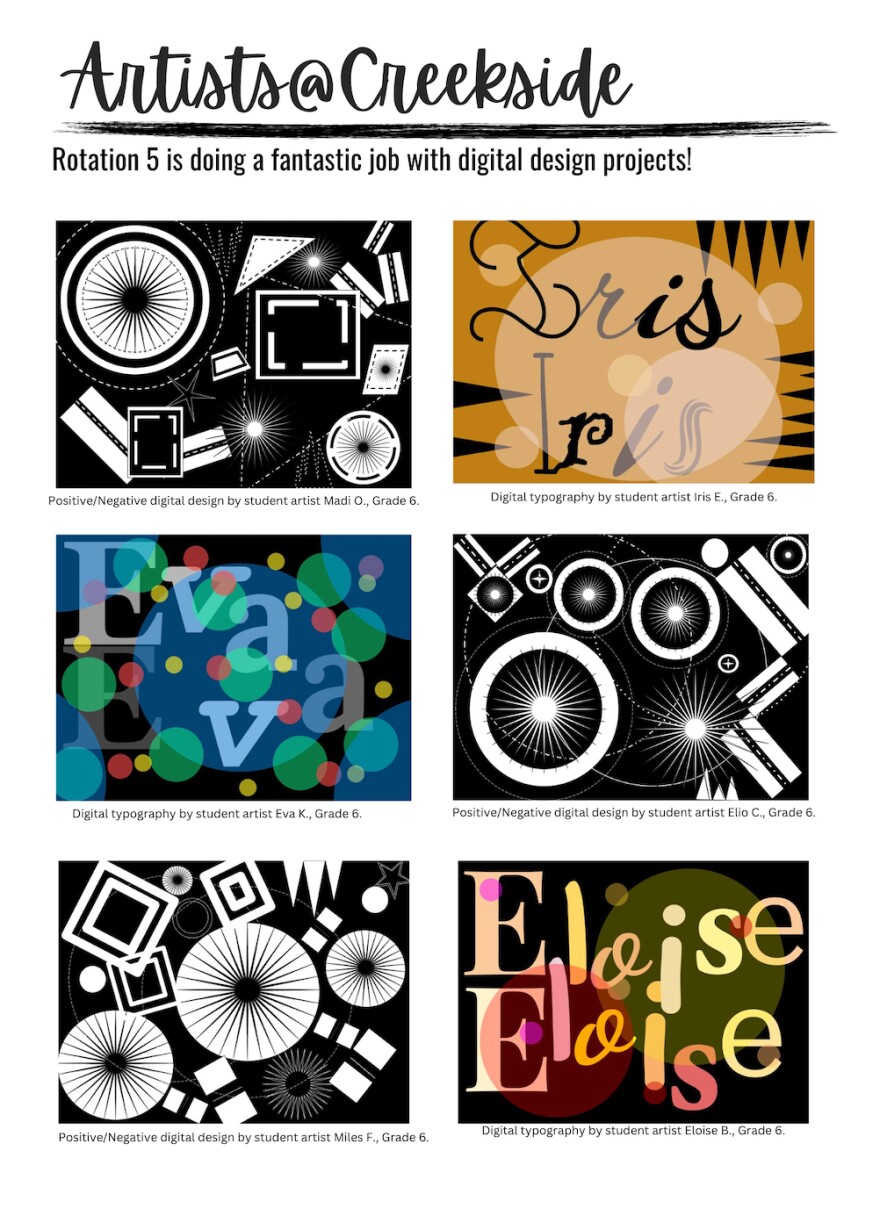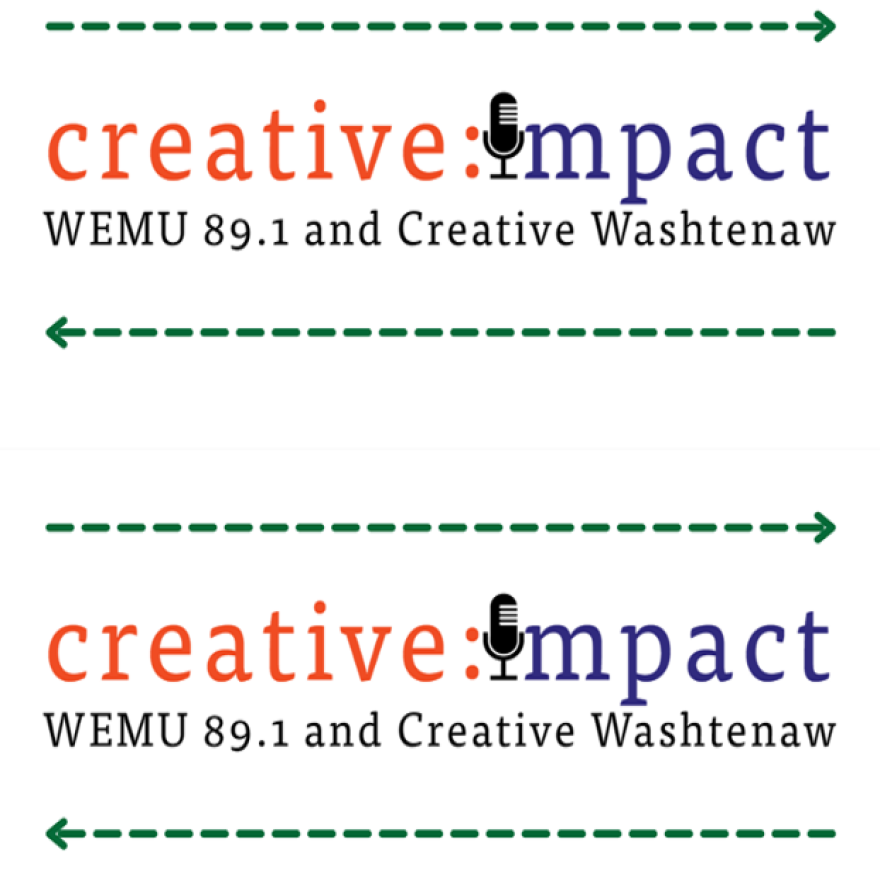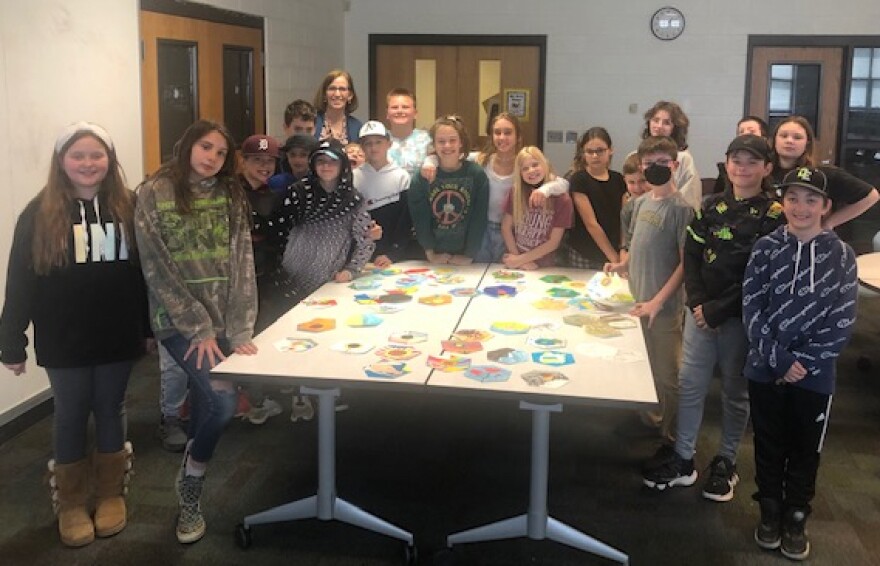Creative industries in Washtenaw County add hundreds of millions of dollars to the local economy. In the weeks and months to come, host Deb Polich, the President and CEO of Creative Washtenaw, explores the myriad of contributors that make up the creative sector in Washtenaw County.

ABOUT JANE MONTERO:

Jane Montero has been the fifth and sixth-grade art teacher at Creekside Intermediate School in Dexter since 2001. She has also served as the Department Chair for Special Areas at her school since 2008. Jane has been teaching since 1989. The first 12 years of her teaching career, she taught in her home state of California; however, the remaining years have been in Michigan. Jane is a 2019 graduate of the National Art Education Association’s (NAEA) School for Art Leaders and serves as the President-Elect for the Michigan Art Education Association. In 2021, Jane was named Michigan Middle Level Art Educator of the Year and awarded the National Middle Level Art Educator of the Year for NAEA and the Marion Quin Dix Leadership Award at the annual convention in New York in March 2022.
After the initial Covid-19 school closure, Jane created two-minute short videos on the Elements of Art and Principles of Design for her students to view from home. These videos inspired her to develop a digital design curriculum which she continues to build. Throughout the 2020-2021 school year, Jane presented at several virtual State conferences, including MAEA, VAEA, IAEA, WYAEA, and Missouri Art Education Association. She was a keynote speaker for the Online Art Teachers K12 (OATK12) summer professional development conference in 2021. Additionally, she has presented at NAEA/NYC in 2022 and at her home state’s conference in Grand Rapids.
Since January of 2021, Jane has had 13 articles published in School Arts magazine primarily focusing on teaching Google Draw as a tool for digital design. Jane’s dissertation, Developing Empathy Through Design Thinking in Elementary Art Education, was recently published in the January 2023 issue of the International Journal of Art and Design (JADE). Two of Jane’s mottos are Pursue your Passions and Never Stop Learning.
RESOURCES:
Art at Creekside Newsletter (see QR Code below)

MLive: "A Dexter art teacher is a two-time national award winner"
TRANSCRIPTION:
Deb Polich: Welcome to creative:impact on 89 one WEMU. I'm Deb Polich, president and CEO of Creative Washtenaw and your creative:impact host. Thanks for tuning in on Tuesdays to meet the artists and creatives who choose to live, work, inspire and change lives in Washtenaw County. Jane Montero is a life-changer. And I'm not just saying that. There is proof two times over that Jane, who teaches art and design at Dexter's Creekside Elementary School, has received her second Outstanding Teacher Award of the Year from the National Art Education Association. I can't wait to hear her story. Jane Montero, welcome to creative:impact.
Jane Montero: Thank you so much. It's wonderful to be here.
Deb Polich: Well, Jane, congratulations on being recognized for your very important work as a teacher on a national level.
Jane Montero: Thank you. I really appreciate it.
Deb Polich: This award recognizes an exceptional teacher of art in K-through-12 classrooms, museum education, higher education, or alternative settings. That's a pretty heady competition. It's got to be really rewarding. But how does a national award compare to the rewards you find in teaching every day?
Jane Montero: That's a great question. It's kind of a dual world. I feel I live in my main world, of course, teaching. But then there's the professional world of the National Art Education Association. So, while I'm teaching every day and doing what I love, circling out there is the National Art Education Association. And it's a group of art educators. We aspire to be our best. We promote each other and support each other. So, that's kind of how this award came about for me.

Deb Polich: Well, and I understand that you didn't choose teaching as your profession originally. Tell us that story.
Jane Montero: Oh, my goodness. Okay. The story. So, I went to Art Center College of Design in Pasadena, California, which is close to where I grew up. And I wanted to be an art director. I thought this would just combine my love of graphic design with writing. And so, I went forth at Art Center and got my first job. And I thought, "Man, I have made it!" I mean, it was the 14th floor of a glass building overlooking the Pacific Ocean.
Deb Polich: Oh, nice view!
Jane Montero: Oh, yeah. And I just thought, you know, this is just the capstone of all of my work. You know, I was maybe 26 years old, and I got up early every morning and I went into the office, but nobody else was there. And it would be 8:30, 9:00, 9:30, 10:00. And then some people would roll in and then we'd talk a little bit. And, I mean, I was ready to go, and then it would be lunchtime. And it would be another two-hour lunch. And then, we'd get back and I'd be getting tired. You know, it was close to 5:00. And I've been there since 8:30. And then, we would get an assignment. So, that world, for me, was very different from the type of person I am, I quickly discovered. And it so happened that we were away on the shoot. We were up in the mountains in L.A. and doing a shoot for a motorcycle company. And the senior art director, who had been my teacher at Art Center, he said, "Hey, Jane. Can you go down and teach my class tonight?" And I said, "Well, what are they doing? What are you teaching them?" He goes, "Anything you want!" And I just knew, right then and there, I was like, "I can teach anything I want." So, I walked into Art Center and I hate to say this, this sounds kind of sappy, but it was kind of like that feeling you have when you fall in love. I know. Don't laugh, but it was like--
Deb Polich: I'm loving it. Truly.
Jane Montero: Just like head to toe. I just felt that that was the place for me. And then I drove home that night. This is before cell phones. I couldn't call my husband and I thought, "Oh, boy, what do I do now? I've entered this career. I don't love it. I want to do that career." So, I jumped into researching universities and went back and got my master's in education. Never looked back. That was 33 years ago.
Deb Polich: Wow, that's a great story. And you now teach fifth and sixth graders at Creekside. And, you know, this is just about the time some kids are deciding what's cool and what isn't and how they're going to do stuff. At that age, are they excited or reluctant to take art when they come into your classroom for the first time?
Jane Montero: Well, that's interesting because art is part of our rotation wheel at Creekside. And what that means is, every nine weeks, students switch between art and lifetime fitness and world language and back to lifetime fitness. So, they really have no choice.
Deb Polich: I see.
Deb Polich: However, I started thinking, "You know, what can I do to capture and engage these students?" Because. Really, by the time they're ten or 11 years old, they have in their mind whether they can or cannot draw. I'm not making that assumption. They are. So, for me, if I can do anything to engage them, really, I can keep them, you know, in a positive mindset, ready to learn, and not worrying about are they good or not and drawing because technology kind of evens out the playing field, so to speak.

Deb Polich: So, you started using technology. We're going to get to that in a second. But, before we do, let me just say that this is 89 one WEMU creative:impact. And I'm Deb Polich, and my guest is Jane Montero, who, for the second time, has received the National Outstanding Art Teacher of the Year award. So, Jane, let's go back about three years. COVID pandemic shut down our schools, and online education took over. How did you, as an art teacher, adapt?

Jane Montero: Well, that's when everything happened for me, because I know it was a horrible time for everybody. But I discovered it was really a silver lining for my professional world. You know, I thought, "What can I do?" We were told really to just do anything, but they didn't really tell us what. But I knew that kids had Chromebooks at home. So, I did not know Google Drive. I don't work for Google. I don't know anything about their program. But I thought, "I need to learn this." Because if kids have computers at home, this is a way I can keep them invested. So, I just sat down one day and started teaching myself Google Draw. When I went to art school, there were no computers. So, even though I was trained as a graphic designer, I wasn't trained in computer, you know, graphic design.
Deb Polich: Right.
Jane Montero: So, I just went full force. I did anything I could and flipped it to digital.

Deb Polich: And the kids got into it, right? And you're still using technology in your classroom. In fact, I read that you changed the name of your class from art class to art and design class.
Jane Montero: Mm hmm. Mm hmm. Yeah. And that was really just because I wanted to bridge art and design together. They do work so well together, but yet there is that separation, and I feel, especially at the elementary level. Fifth and sixth are considered intermediate, but, at the elementary level, there is that, you know, traditional art. We're going to be doing clay. We're going to paint. We're going to do collage. And that's all wonderful and appropriate. But, for me, I wanted to bring in that digital design, and this sort of helps explain my program.

Deb Polich: So, we at Creative Washtenaw worked very hard to bridge that gap all the time between the arts and all of the creative industries. And so, we're very excited that you're doing that kind of work. But we also know that it's not always readily accepted by either fellow teachers or those that are deciding curriculum. How are you working with that?
Jane Montero: Well, you know, for me, it's been sort of an interesting journey. And I call it a journey because it is far from over. I have done a lot of presentations on digital design. I've talked to my administrator. I've talked to my superintendent. And I've really wanted to share what the students are able to do and to explain how they're using the elements of art and principles of design within digital design. It's all creative problem solving, right? I mean, regardless of the material.

Deb Polich: So, you kind of described your students when they entered your classroom. What changes do you see in them by the time they leave, and what change you see in yourself?
Jane Montero: I see so much confidence in kids and what they're able to do. You should see how proud they are. When they leave my room each day with their Chromebooks, they'll always say, "Show your teacher what you've done." And then I'll even have teachers say to me, "I just loved that one project that you're doing," or "This is so cool what the kids have done!" And it really opens up a conversation. It's allowed me to create digital--I always call them billboard. Sorry. It's from my advertising days --but digital bulletin boards. I can send them out in family newsletters. I can post them on the website. So, it's just really opened up a whole another way of communicating. And, you know, for me, it's worked out well. And I just want to keep...I think, of new lessons every single day.

Deb Polich: And those kids get to say, "I made that!"
Jane Montero: Mm hmm. Mm hmm. Mm hmm.

Deb Polich: Well, Jane, thank you so much for doing what you do, inspiring students and your profession. And thanks for being on creative:impact.
Jane Montero: Thank you so much for having me.

Deb Polich: That's Jane Montero, art and design teacher at Dexter's Creekside Elementary. Find out more about Jane, who has now been twice named the National Outstanding Art Teacher of the Year, at WEMU dot org. You've been listening to creative:impact. I'm Deb Polich, president and CEO of Creative Washtenaw, and your host. Mat Hopson is our producer. We invite you to join us every Tuesday to meet the people who make Washtenaw creative. This is 89 one WEMU FM Ypsilanti. Public Radio from Eastern Michigan University.

Non-commercial, fact based reporting is made possible by your financial support. Make your donation to WEMU today to keep your community NPR station thriving.
Like 89.1 WEMU on Facebook and follow us on Twitter
Contact WEMU News at 734.487.3363 or email us at studio@wemu.org







